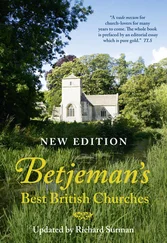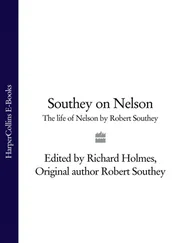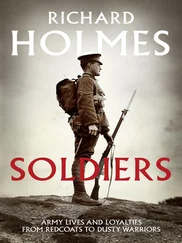Fulcher begins each beat with his elbows level with his ears and the drumsticks meeting in front of his nose. He has long learnt ‘to beat the drum with ease to himself, and it will appear slight those who see him as it ought to be, the pride of every drummer to beat his Duty with an Air and Spirit’. He began by learning the Long Roll, and then went on to a series of rolls, flams, drags, strokes and lastly the paradiddle, a roll beaten with alternate sticks.
The liturgy of his trade is now burnt into his young brain, and he can rap out all the calls of barrack life and field service, quickly telling his captain what call the commanding officer’s drummer has just begun. He knows that on a normal morning in the field, with no marching or fighting to be done, he will beat Camp Taps, ‘the First Signal on the Drum; it must be repeated from Right to Left of the Line by a drummer of each regiment and return back from Left to Right previous to the reveille’. 6On campaign, however, the jaunty drag and paradiddle of the General is usually appropriate, and its message is blunt: officers and men are to rise at once and prepare to fall in under arms, for there is business at hand.
But this morning of 10 February 1846, the officers and men of the 50th fall in silently, without beat of drum, before daybreak, and set off in column, on a front of four men, company following company with short gaps between them, across a flat countryside liberally dotted with scrub. The morning smells of spice, smoke, urine and dung, shot through with a tang of tobacco – for many officers, even at this early hour, cannot be parted from a cheroot.
Although the politics of the war mean little to Darby Fulcher and his comrades, nobody present that morning has any doubt that this conflict (later known as the First Sikh War) is a very serious contest between the armies of British India and the Sikhs, who had crossed the River Sutlej, which bordered their territory, in December 1845. They would be beaten, if that is quite the right word for such doggedly fought, bloody and inconclusive battles, at Mudki on 18 December and at Ferozeshah three days later. In these two actions the 50th lost a total of 244 of its officers and men killed and wounded, amongst them the grenadier company’s other drummer. The regiment fought in the altogether more successful battle of Aliwal on 28 January 1846, when another eighty-six men were hit.
The dull odour of bodies in clothes changed too rarely is now heavily overlaid with the sulphurous, bad-egg stink of black powder, for British infantrymen still ply their trade with a smooth-bore muzzle-loading musket, and in the process smear both unburned powder and its greasy residue all over themselves.
This is not quite the same musket carried at Waterloo, for in September 1841, earlier than most, the regiment received muskets with the new percussion lock. A man no longer has to tip powder into the musket’s priming pan, snap the steel shut over it, and hope that when he presses the trigger the flint will strike sufficient spark to ignite the priming and go on to fire the main charge. He now places a small copper cap filled with fulminate of mercury onto the nipple fitted to his musket-barrel, just where the touch-hole used to be. When the trigger is pressed the cock falls to burst the cap and, barring the most uncommon accident, fires the musket. The 50th, drawn up in line two ranks deep, can loose off four volleys a minute. Although a soldier has little chance of hitting an individual aimed at 200 yards away, volleys can do shocking damage at close range. However, any experienced officer trudging forward through the bushes in the half-light will tell you that battles are not won by endless volleying. Indeed, some harbour the conviction that firing actually defers a decision, and it is important to bring the bayonet – sixteen inches of fluted steel – into play as quickly as possible.
This view would certainly have found favour with Lieutenant General Sir Hugh Gough, the sixty-seven-year-old Irishman in command of the British army during the First and Second Sikh Wars. A couplet composed by an officer with a classical education, for Alexander the Great had been stopped by the Sutlej, caught the feel of the man.
Sabres drawn and bayonets fixed,
Fight where fought Alexander.
Old Paddy Gough’s a cross betwixt
Bulldog and Salamander.
At Mudki and Ferozeshah, Gough launched direct attacks on well-held Sikh positions, and before the day is out, when told that the ammunition for his heavy guns is running low, he will exclaim: ‘Thank God! Then I’ll be at them with the bayonet.’ 7Yet nobody can say that Hugh Gough spared himself. With his mane of white hair and long white ‘fighting coat’, he is always to be found where the fire is hottest. ‘I never ask the soldier to expose himself where I do not personally lead,’ he later declared. ‘This the army knows and, I firmly believe, estimates.’ 8
Gough’s plan this morning has an unusual measure of subtlety: two feint attacks. His Sikh opponents have now been pushed back across the Sutlej River into their own territory everywhere save here near the village of Sobraon, where they hold a strong position facing southwards. It is shaped like a long, flattish letter U, a mile and a half wide along its southern side, with its open end to the river, and a pontoon bridge behind it. A Spanish officer in the service of the Sikhs has designed formidable defences, consisting of two concentric lines of earth ramparts, twelve feet high in places, with arrowhead bastions jutting out in front of the embankments and a broad ditch in front of them. On the Sikh right the ground is too sandy for the construction of high ramparts, and on these lower earthworks – too unstable to bear the weight of proper artillery – the Sikhs have planted a line of 200 zumbooruks, light swivel guns usually fired from a camel’s saddle.
The Sikh position is held by some 20,000 infantry with seventy guns, and there are more infantry and guns dug in on the north bank, covering the bridge. Gough has about the same number of men but fewer guns. However, drawing confidence from the fact that thirty of them are heavy howitzers and five are powerful 18-pounders, he decides on a three-hour bombardment by guns and rockets, followed by an infantry assault. His left-hand division, under Major General Sir Robert Dick, will attack the Sikh right, apparently their weakest sector, while his centre division, under Major General Sir Walter Gilbert, and his right division, under Major General Sir Harry Smith, will make feint attacks to prevent the Sikhs from concentrating to meet Dick’s assault. Gough’s situation is complicated by the fact that the Governor-General of British India, Sir Henry Hardinge, is present with the army. He is a lieutenant general too, and although he has volunteered to serve under Gough in his military capacity, he is not slow to exercise his superior civil authority if he feels it right to do so. He has approved the plan, but only in guarded terms. ‘Upon the fullest consideration of the question,’ he wrote, ‘if the artillery can be brought into play, I recommend you to attack. If it cannot and you anticipate a heavy loss, I would recommend you not to undertake it.’ 9
All this is hidden from Darby Fulcher as his battalion moves forward without drumbeat, in column in the dark at about 4.00 a.m. Ahead of it marches HM’s 31st Foot, and, a little less than two miles from the eastern face of the Sikh entrenchments, it deploys from column into line, with its right flank on the Sutlej and its left joining the 47th Bengal Native Infantry. The 50th swings into line about a hundred yards behind, with its grenadiers nudging the river bank and its light company, on the left of its line, in sight of the grenadiers of the 42nd Bengal Native Infantry. At the first sign of dawn, the whole line moves forward, to within range of the Sikh guns, and the men lie down. Even when the sun comes up it is still too misty to see what is happening, which is as well, for some of the British heavy guns are not yet in position.
Читать дальше












